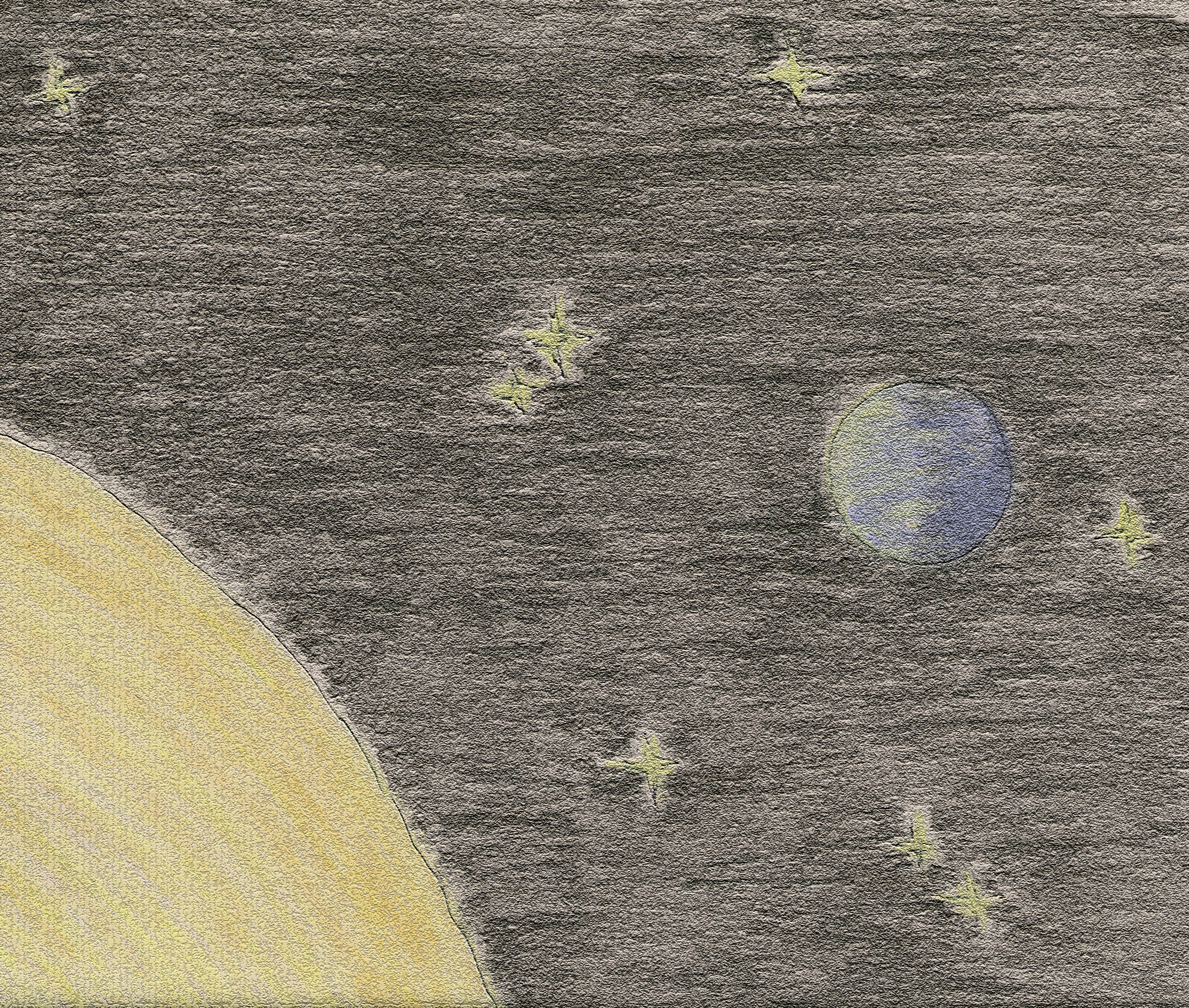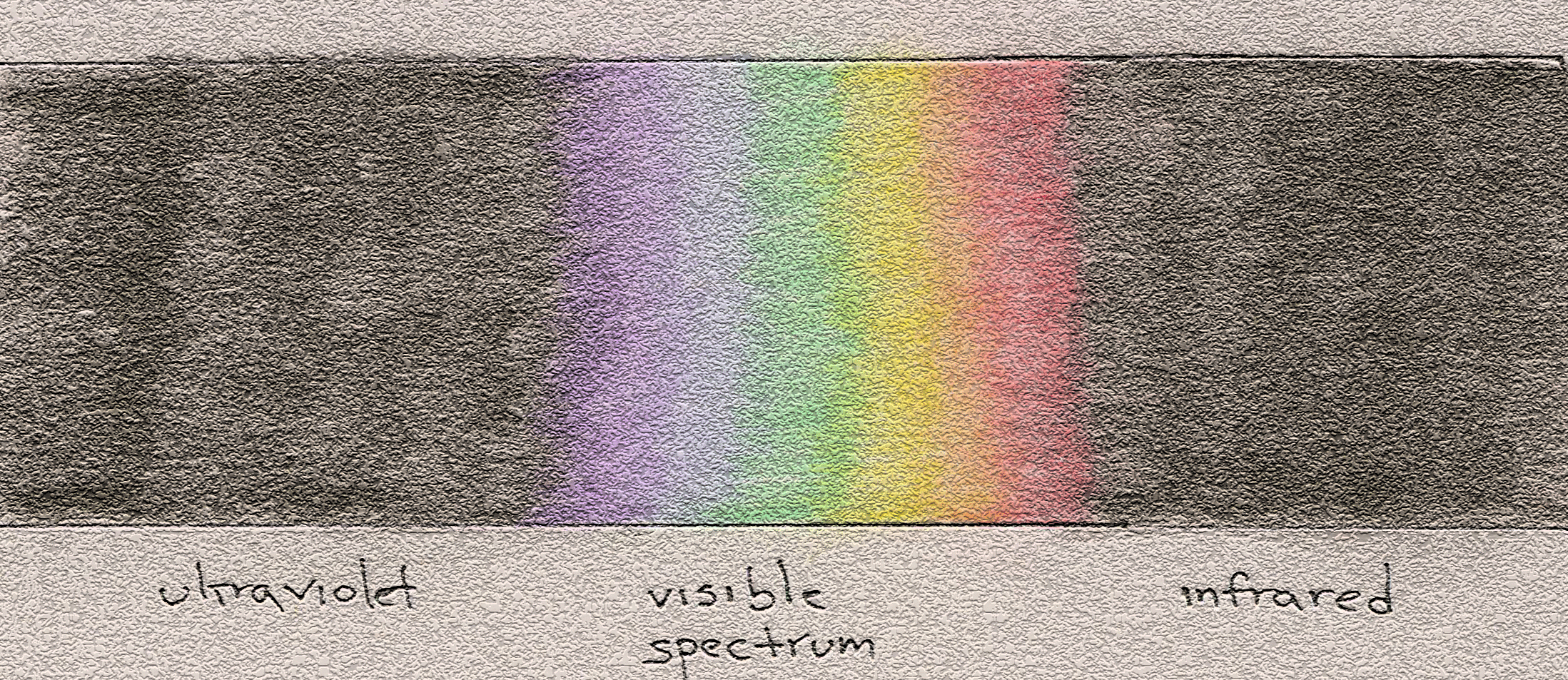We are awash in electromagnetic radiation. Our eyes, however, are sensitive to only a very narrow section of the spectrum along which electromagnetic waves are arranged according to size and frequency.
This narrow range of energy has, over time, become sufficient for our central nervous system and one of its outermost extensions—the eye—to reconstruct the scene before us, to successfully re-imagine the objects within our view—their shape, color and relative positions. It has become the visible spectrum, the medium in which we see.
Despite that fact, light is of but little moment in the machinations of vision: it enters the eye and isomerizes a protein after which it serves only as a reference for the subsequent labors of the eye and brain.
Light
Radiant bodies such as the Sun and the stars emit energy in the form of electromagnetic radiation,

which can be described and/or measured as wavelengths arranged along a spectrum from shortest to longest.

As we move along the spectrum, we move from waves characterized as gamma rays to waves characterized as X-rays, ultra-violet light, visible light, infrared light, microwaves, radio waves and electrical energy. Note, however, that visible light—the band of frequencies to which the photoreceptors of our eyes are sensitive—is a very narrow, almost negligible band of energy raging between ~700 THz and ~400 THz.

Other wavelengths, such as those of radio and television waves, do not function as stimuli for any of our sense organs and can only be detected and “interpreted” by radios and televisions (devices peripheral to the ear and eye), which then convert electromagnetic energy into the energy of pressure and light waves. But pressure- and light-wave energy are of incident only to cellular and histological elements within the ear and eye. Sense organs have still to make sense of this energy for the brain. They do so through a process called transduction in which energy is again transformed: now from the form absorbed by the sense organs into an electrochemical form accessible to the brain.
Photons
Electromagnetic radiation can also be described according to its basic unit, the light quantum or photon, which is peculiar for the fact that it exhibits wave-particle duality, i.e., the properties of both waves and particles. (For our purposes, we will refer to the particle-like property of light when discussing such issues as photoreceptor sensitivity, and to the wave-like property of light when discussing such issues as color vision.)
Photons are emitted by the Sun and stars; travel towards Earth at 300,000 km/s; and enter our atmosphere where they are diffused, absorbed or reflected by the various materials that they encounter.
For much of life and for most animals, there has been but the sun and stars and occasional bolt of lightning, or environmentally induced fire, to provide such source light. Everything else was, and is, witnessed in reflected light. So, it would be wise to begin, if only incidentally, by acknowledging the role of the Sun in vision. It is the key determinant in the development of all visual systems on this planet because it is the principle source of the electromagnetic energy to which these systems respond.